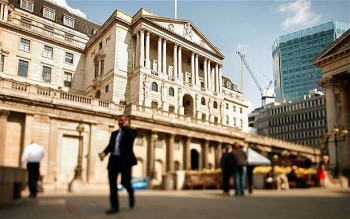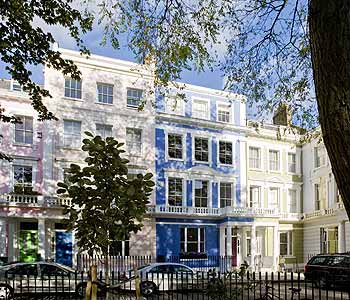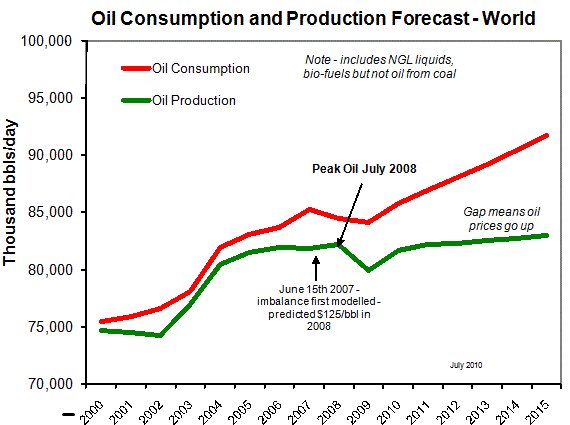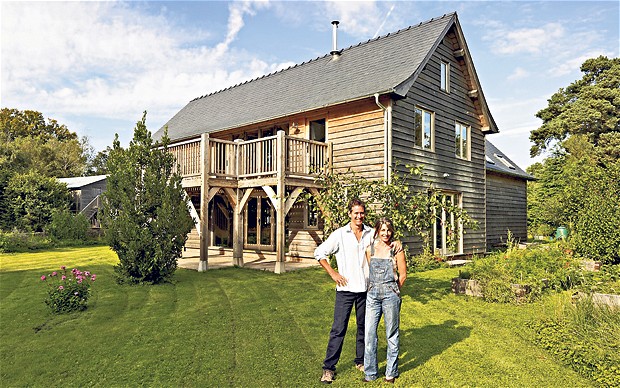383: Stagflation All The Way
06-19-2011
 www.google.co.uk
www.google.co.uk
Strategy to Inflate: As western national government look to reduce their sovereign debt mountains, they will view inflation as the best way forward to try and reduce this mountain in real terms. It’s politically more acceptable to have inflation at 5% and wage increases at 2% - thereby reducing disposable incomes by 3% a year and the debt mountain than having inflation at 0%, telling people they need to have wage reductions of -3% and having the debt mountain stay the same size. This we believe is one of the fundamental reasons why the Bank of England has “let” inflation rise to 4-5% without raising interest rates. At least they will argue that there is some form of GDP growth, albeit this might only be in the 1-2% range. And with this growth, tax receipts should keep rising.
Option to Print Money: The big lever of printed money has not worked very effectively in the UK – and the Bank of England’s must be looking over the pond with horror at what is happening in the USA and think, there is no way th ey want to follow them down this road of escalating debt mountains, higher taxes, drifting to default and declining currency value – all leading to even higher inflation and eroded living standards. The other problem with printing money is it declines the value of national currencies – on the one hand this leads to lower import costs as import prices rise, hence stimulating domestic manufacturing. However, if your manufacturing efficiency is poor and the declining currency value upsets your foreign investors who then shy away from buying your new debt, then you can get into a real pickle. This is the way the USA has been heading for many years now with a massive acceleration in the last 3 years – it’s only so much the international investor can take and when the Fed stops printing money in 8 days time, we think interest rates in the USA will have to rise – and these will depress the economy. China is now only investing 25% of it’s foreign reserve into new dollars – it is divesting away from the dollar. Frankly, we think the Fed’s strategy will end in disaster – a US crash later this year (see Special Report 382).
ey want to follow them down this road of escalating debt mountains, higher taxes, drifting to default and declining currency value – all leading to even higher inflation and eroded living standards. The other problem with printing money is it declines the value of national currencies – on the one hand this leads to lower import costs as import prices rise, hence stimulating domestic manufacturing. However, if your manufacturing efficiency is poor and the declining currency value upsets your foreign investors who then shy away from buying your new debt, then you can get into a real pickle. This is the way the USA has been heading for many years now with a massive acceleration in the last 3 years – it’s only so much the international investor can take and when the Fed stops printing money in 8 days time, we think interest rates in the USA will have to rise – and these will depress the economy. China is now only investing 25% of it’s foreign reserve into new dollars – it is divesting away from the dollar. Frankly, we think the Fed’s strategy will end in disaster – a US crash later this year (see Special Report 382).
Middle Ground: There is a middle ground and the Bank of England seems to have found it, for right or wrong, namely:
· GDP growth 1-2% (attempted recovery)
· Bank of England interest rates on hold at 0.5%
· Mortgage Rates at 5-6% meaning the banks make gigantic profits to rebalance their damaged books
· Inflation controlled in the range 4-5% - being used to reduce disposable income by stealth (rather than ask for wage reductions and higher taxes)
reductions and higher taxes)
· Stop printing money and target slow steady growth and re-balancing from public to private sector employment
· Allow Sterling to float and settle in the middle area
· Keep Credit Agencies happy with plans for deficit reduction
Stagflation: This what we describe as good old fashioned “Stagflation” – a stagnant overall economy, with fairly high inflation and reducing living standards for most people. It’s probably the best we can hope for. The reason we describe this central scenario is that it directly links to the property market and your investment strategies – and the market for rental supply and demand. We will explain.
Low Lending: Bank lending remains low as demand is low and banks remain reluctant to risk lending to sub-prime borrowers. Deposits are high, interest rates on mortgages are very high (relative to BoE rates, a massive 5% above-premium) and the banks would rather hoard their cash ,mountains because of new regulations dictating higher collateral, and a pessimistic view of recovery hopes – they don’t want to get burnt again if the property market dips and personal home defaults start up again.
Buy-to-Let Growth: Meanwhile, the buy-to-let sector has shown a bit of a resurgence – partly because of increased rental demand and rental prices, and partly because banks have done analysis to prove that buy-to-let investors are generally lower risk than individual home owners as far as credit rating is concerned. Buy-to-let investors rarely default – analysis from the 2007-2011 period shows.
Landlord Misery: Meanwhile increasing tenant powers, increasing regulations, increasing energy, council tax and hassle s have driven many buy-to-let investors out of the business. Its a tough task with many stresses so there are not enough buy-to-let investors to feed the growing buy-to-let sector in southern England and some parts of the north, Wales and Scotland. So rents continue to rise – particularly in London – at well above inflation. Rents are rising at about 8% per annum (against inflation in range 4-5%. Meanwhile property prices remain stagnant in most areas – and hence yields are rising.
s have driven many buy-to-let investors out of the business. Its a tough task with many stresses so there are not enough buy-to-let investors to feed the growing buy-to-let sector in southern England and some parts of the north, Wales and Scotland. So rents continue to rise – particularly in London – at well above inflation. Rents are rising at about 8% per annum (against inflation in range 4-5%. Meanwhile property prices remain stagnant in most areas – and hence yields are rising.
Higher Yields As Demand Rises: So the message is, as long as you can handle the hassle and are good at managing properties, buying high yielding rental property in good southern England areas with rising rental demand is probably a pretty good strategy – even with the threat of property price drops ever present. It’s a risk because property prices can fall sharply if another recession begins, but ultimately, a lot more rental property will be require in London in future years because so many 20-40 year olds have given up aspiring to own a property because of:
· high student loans (average £30,000)
· high wedding costs (average £20,000
· increasing student fees
· inflation and tax eroding disposable income
· high deposits (25% of £150,000 – £37,500)
· rental being only slightly more expensive than servicing a mortgage without any risks
· young people would rather holiday, have fun, enjoy life and travel these days
· money from the bank of mum and dad to help with deposits dried up after the 2008 financial meltdown and reduced pension with jobs losses
More Rental Less Home Ownership: All of these factors are unlikely to change any time soon. In London, the property market is supported by gigantic financial inflows from wealt hy immigrants and investors. In the provinces, this is not the case, so areas far from London will be more affected by the factors mentioned above. Hence one can see that property prices should remain broadly the same in northern areas as rental prices rise as the younger population increases. Buy-to-let properties will be held by only a more select group of wealthy people, in the 45 year plus age group. These buy-to-let investors will probably grow old with these properties as time moves on. Some of the 20-40 year olds will possible get to buy property in the early 40s, but many will remain in rented accommodation – similar to Germany. The argument that everyone should have a right to own a property will fade away as people are more worried about their jobs, having enough money for food, holidays, a car and retirement. This sounds rather bleak – in a way it is – particularly for low growth areas well away from London. Times are likely to get worse through inflation lowering disposable incomes by stealth.
hy immigrants and investors. In the provinces, this is not the case, so areas far from London will be more affected by the factors mentioned above. Hence one can see that property prices should remain broadly the same in northern areas as rental prices rise as the younger population increases. Buy-to-let properties will be held by only a more select group of wealthy people, in the 45 year plus age group. These buy-to-let investors will probably grow old with these properties as time moves on. Some of the 20-40 year olds will possible get to buy property in the early 40s, but many will remain in rented accommodation – similar to Germany. The argument that everyone should have a right to own a property will fade away as people are more worried about their jobs, having enough money for food, holidays, a car and retirement. This sounds rather bleak – in a way it is – particularly for low growth areas well away from London. Times are likely to get worse through inflation lowering disposable incomes by stealth.
Civil Disorder Threat: The big threat is that riots and major public disturbances will break out – like in Greece, leading to credit rating agencies downgrading the UK credit from its AAA rating. This would lead to even higher interest rates as Sterling crashed, and another deep recession. The best the UK can hope for is that the public sector jobs cuts work, tax cuts lead to higher private sector investment and growth and jobs, and the population stays engaged in working through the monstrous debts the Labour party left behind in their 13 years of profligate spending. In a way, we are all paying back the debts caused by wastage of money during this period.
Back to Peak Oil Stagnation: One of the reasons why we do not see things improving rapidly if at all is that we are now more of less past Peak Oil (or at least Peak Cheap Oil). This is the point of maximum global oil production. The end of cheap oil was 2003 when prices rose above $25/bbl and this corresponds with the decline in the living standards we have seen since then in most western nations. Debts rose rapidly as oil escalated to $147/bbl in July 2008 before the financial meltdown – as unsustainably high oil prices hit the global economies – another oil price shock. We have updated our model of global oil supply and consumption through to 2015 and it looks like a very tight market will remain until then as China, India, Brazil and other developing nations increase their consumption whilst the western nations get squeezed. So the fundamental economic situation to stimulate a string recovery in UK, Europe and the USA is simply not there – period. Strong recovery could only come with oil prices at ~$50/bbl. Any oil prices over $100/bbl should lead to Stagflation as we are seeing. The only stock and shares that would normally increase in this situation would be oil, gas and mining stocks.

High Oil Price Leads to Stagflation: We’ll expand on this theme in our next special report, though we thought we should mention this because – as we forecast high oil prices to remain (unless a severe recession starts again), then inflation will continue to be a big problem – hence it will be “stagflation all the way”.
Property As A Hedge Against Inflation: For the smart investors, consider that yo ur savings will erode over time by ~2-3% a year. Stocks and shares are likely to remain depressed and risky with lowering dividends. Cash in banks could also be risky if banks fold. And investment in property would lead to reducing debt levels in real terms over time. So as a hedge against inflation, property is probably better than most people think. Even if property prices do not keep pace with inflation, over time, your equity would rise and debt levels reduce – and if you have a high rental yield, you could still do quite well in the long run. This is why so many wealthy people put their money into property, as a hedge against inflation. If you could purchase property at ~25% below market value with cash, you do particularly well. This is one of the reasons why the rich get richer, and middle income people stay the same or get poorer.
ur savings will erode over time by ~2-3% a year. Stocks and shares are likely to remain depressed and risky with lowering dividends. Cash in banks could also be risky if banks fold. And investment in property would lead to reducing debt levels in real terms over time. So as a hedge against inflation, property is probably better than most people think. Even if property prices do not keep pace with inflation, over time, your equity would rise and debt levels reduce – and if you have a high rental yield, you could still do quite well in the long run. This is why so many wealthy people put their money into property, as a hedge against inflation. If you could purchase property at ~25% below market value with cash, you do particularly well. This is one of the reasons why the rich get richer, and middle income people stay the same or get poorer.
Central Location Close To Jobs: So our overall steer is, if you are looking to invest in property, buy-to-let is still a good option but only in UK areas with growing micro-economies and large private sectors like central London and Aberdeen. You have to make sure you buy high yielding property at a good price in areas close to rail, tube, bus, roads, retail and leisure facilities with many high paid jobs close by. A well presented property should then attract a good low risk tenant at a good rental price. Specific examples:
· Shoreditch
· Battersea-Clapham
· West Kensington
· Stratford
· Limehouse
· Bloomsbury
· Kings Cross
· Chiswick
· Aberdeen
We hope this Special Report has helped you formulate your investment strategy. If you have any comments, please contact us on enquiries@propertyinvesting.net

